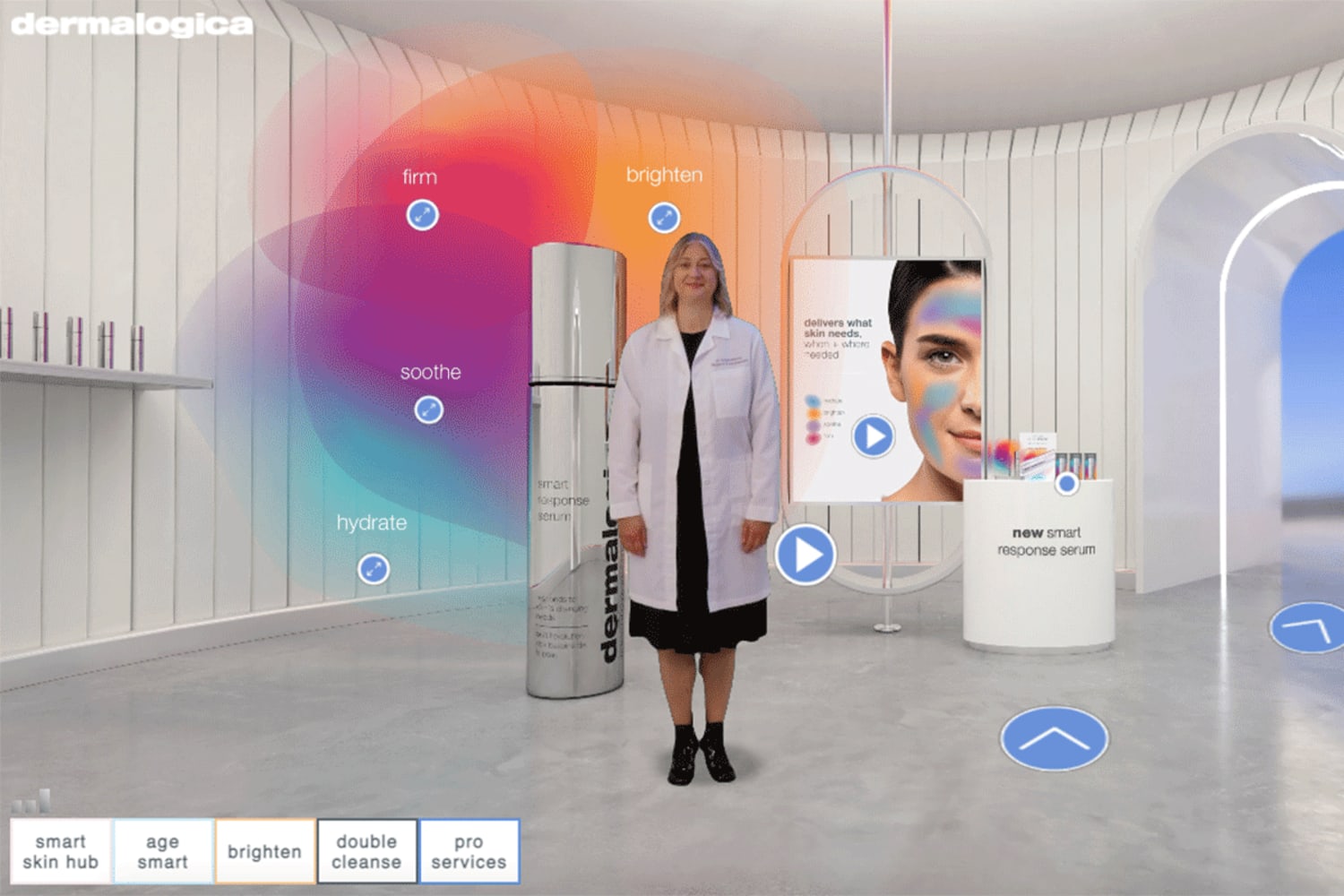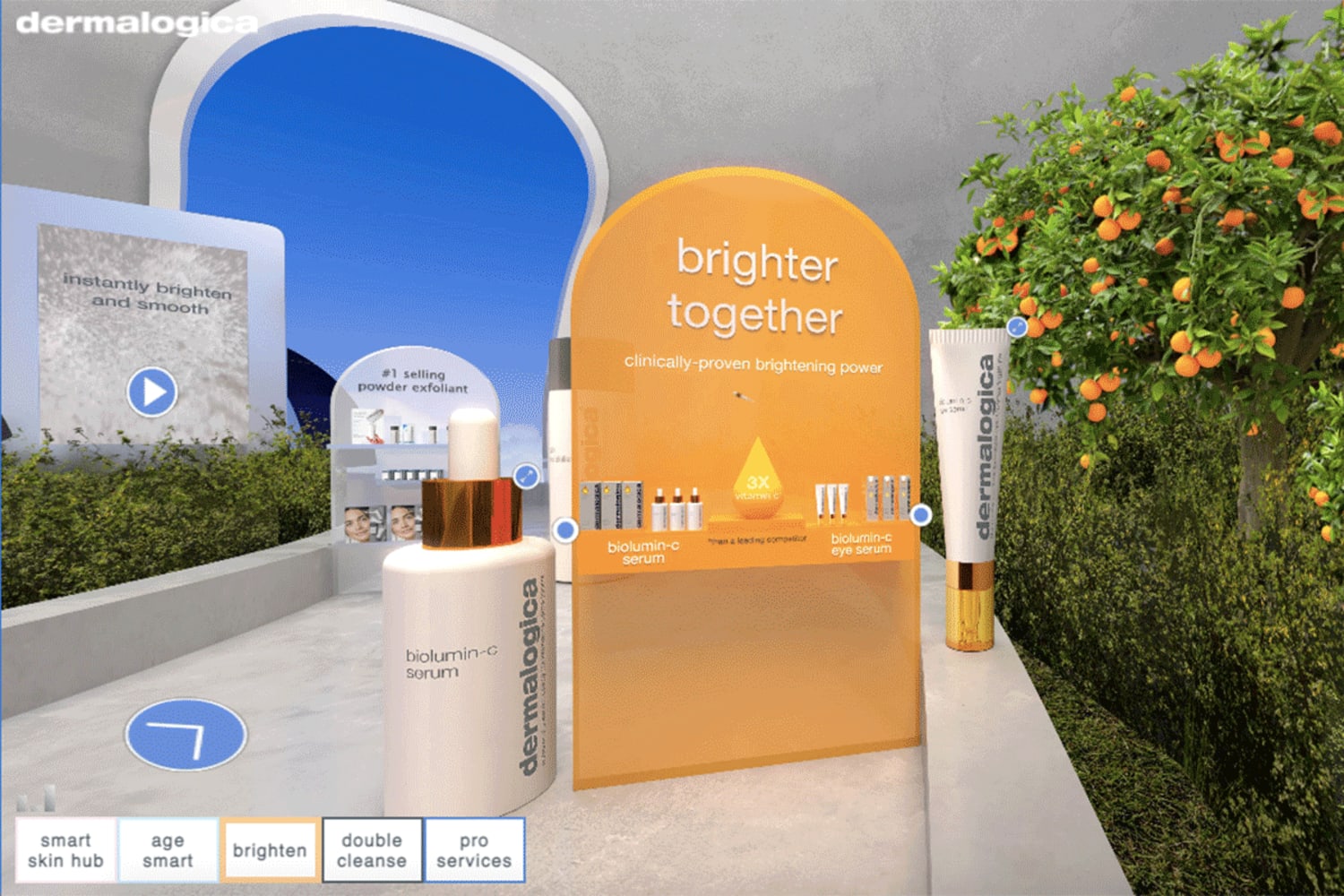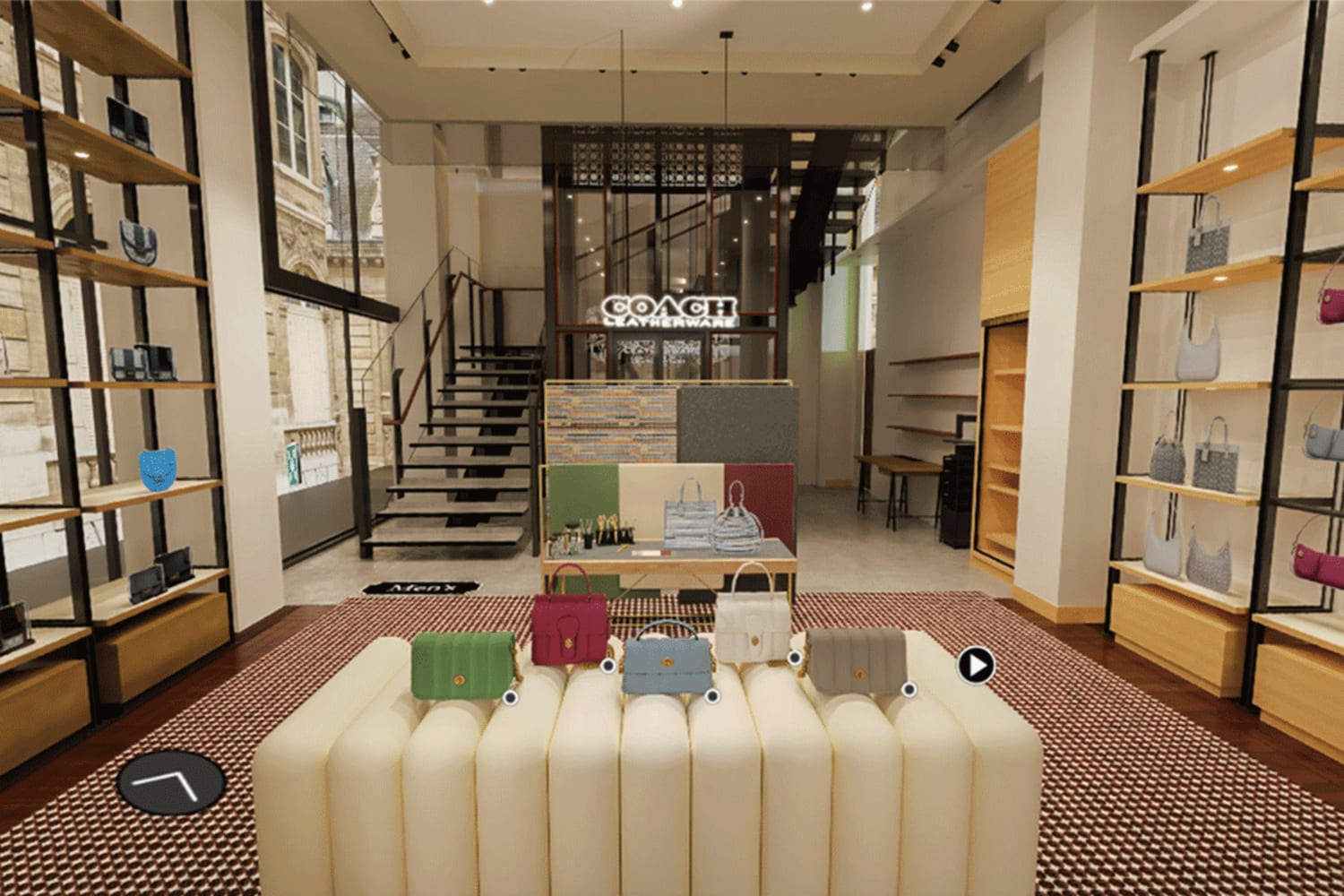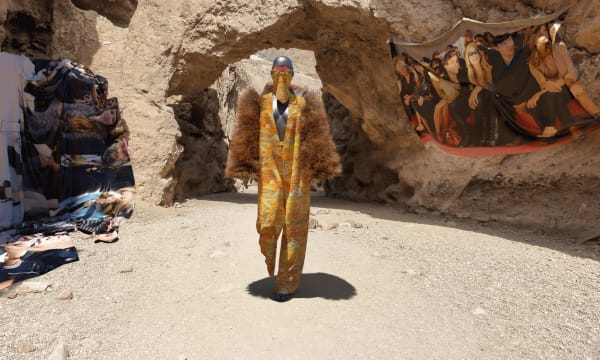Monday, August 23, 2021
"Our goal is to be to be the technology that powers shopping in the metaverse."
What will retail experiences and brand activations in the metaverse look like? Neha Singh created Obsess to help answer that question. Obsess is a virtual store platform that has worked with brands like Ralph Lauren, Charlotte Tillbury and Tommy Hilfiger to create 3D, interactive and immersive virtual shopping destinations.
Below, Neha speaks with us about what's missing in ecommerce today, how to create engaging virtual stores and why the future of retail is virtual.
For more on the metaverse, download our report, "Into the Metaverse."
What is Obsess?
Obsess is a virtual store platform that brands use to create engaging digital experiences on their website.

What are some recent brands Obsess has worked with?
We have launched 80 virtual retail stores to date. One recent project is Dermalogica, which is a Unilever skincare brand. In their virtual store, you can see all the details about a product, you can add it your cart, you can purchase it. But there's also a lot of education, and they have a lot of interactive content. So, for example, when you enter the virtual store, you are greeted by Dr. Angela, who is the head scientist, and she explains products and how they were created. And as you go through different sections of the store, they also have professional services, so you can actually see somebody giving a skincare treatment.
Another recent example is with Coach. We took their Fifth Avenue flagship store in New York and created a digital twin. Every three months (every new season), they update all the products, as well as some of the décor, and we also add some fantastical elements—like for the holiday season, there was a snow room.
One last example is Mary Kay, another beauty brand. They don't have any physical retail stores, so they created a virtual flagship store. For each of their product lines, there's a whole different experience and a whole different environment. They create localized versions of their virtual store for each market; it’s meant both for consumers to visit directly and shop, and then also for their brand consultants, who use it as a hub to find and meet with customers.
What was the inspiration for launching Obsess?
If you think about any online shopping site today, mostly, it's a grid of thumbnails on a white background. And this interface really has not evolved in 25 years, since it was first created to sell books.
We know that today's consumers, especially younger consumers, are so used to visual content and interactivity because of social media and gaming. But ecommerce has really lagged behind in that experience. So Obsess exists to give brands a new, more engaging, more visual and branded way to present their products online.
It also enables a more discovery driven approach. Today’s ecommerce format is great for search and filter, but discovery is typically something that's happening in retail stores or on Instagram; it's not really happening on brands’ websites. We give brands a much more organic, natural way for customers to discover products and learn about them [onlie].

How has the pandemic impacted Obsess’s business?
With the pandemic, as ecommerce became a priority among brands and retailers, brands realized that they needed to create a better ecommerce experience.
We saw a 400% increase in inbound interest from brands and retailers last year, and we're continuing to see very strong demand this year as well.
How can augmented and virtual realities improve the shopping experience?
From the brand side, I think it's about giving customers a much more branded experience. With ecommerce, every site looks pretty much the same; the font or the color might be different, but ultimately, that's not really much differentiation. Whereas in retail stores, when you step into the store of any given brand, it's a completely immersive experience. As more of commerce moves online, brands need to differentiate themselves.
The second thing I think is presenting products in context. And this, I guess, is both from the brand and consumer side. Typically online, you only see thumbnails of products; you don't really see the context in which they're used. Many of our stores are designed like a house where you go around and you find things that you normally would in a real house, and it helps shoppers contextualize and visualize [the products].
And then for mobile—which is where we see 75-80% of our traffic—the ecommerce experience is even more constrained, with just, like, six thumbnails on a page. [AR and VR] are giving brands a whole new format to present their brand, their story, their products on mobile. That's really where we focus—how to make the product discovery experience amazing on mobile.
On the consumer side, it's really about having a more fun, engaging experience. The grid and infinite scrolling I think is quite tedious. When you go to a retail store where you might just be browsing, it's about inspiration. All that is missing in ecommerce currently.

Is the future of retail virtual?
Yes. It's not just retail; it's a natural progression of technology.
Our real world is 3D. We know how to operate in 3D. That's how our brains work. We have had to learn all these behaviors online that are not natural or intuitive in the way we interact. But over time, as technology gets better and better and hardware shrinks, all of our digital interfaces will become more natural, more intuitive. That's why you're seeing a progression of much richer content across the board. And retail will be part of that.
What's the risk for brands who don't create virtual retail offerings?
Especially for younger consumers, this is already an expectation. We see such high engagement from younger consumers.
75% of millennials and gen Z are either playing games or watching esports, and this 3D, 360-degree interface that virtual stores use is the exact same interface that is used in gaming. So, the sooner that brands can start learning about what's performing well, what's not, and what resonates with their consumer in the virtual world, the better it will be for their business.
How should brands think about creating virtual versus physical retail experiences?
That's a good question. Some brands take their [physical] retail experiences and virtualize them, and some create fresh new experiences for virtual.
In some ways, it is similar to a [physical] retail store, in the sense that you get to express your brand through it, you get to merchandise products and decide where they will go, and you need to have a flow to the experience and a transition as you go through different sections.
But when we are creating something completely virtually, we have more of an opportunity to really optimize the layout, look at our data to see how customers are behaving and then make something that's very, very tailored.
Many of our brands create these amazing new spaces. Some of them may look like retail stores, but may be way larger than they would be in real life. And some of them can be nothing like a retail store; Tommy Hilfiger, one of our clients, created a planet, and a rooftop pool for the summer collection. It can even be something fresh and new for every season; it’s virtual so you could just change it completely.
How do you foresee virtual retail evolving?
There are three key evolutions. The first is that these experiences are going to become a lot more dynamic. And what that means is that, ultimately, you and I could go to the same virtual store, and we might see different products. But also, maybe eventually the environment is customized to the user. That requires some hardware improvements on mobile devices. But it will be possible in the next few years to dynamically create these 3D environments on a per user basis.
The second is that [virtual stores] will become hubs for everything that is related to shopping and the brand. So right now, we integrate with sales chat platforms so you can speak with a sales associate while you're in the virtual store. Over time, this can become even more immersive and interactive. You could have the avatar of a real human sales assistant taking you through the store, answering your questions—or not, if you just want to shop on your own. So that's one part of it. Then, many of our brands have started promoting their other in-store services, like appointments, etc. So virtual stores will become this place where the brand can display not just the products, but all the services that they offer.
And then lastly, these experiences will become a lot more social. In real life, you can go shopping with your friends, but that behavior doesn't really exist in ecommerce today. In the future, you will have the ability to go shopping with a friend, with an influencer, with a designer.
How do you define the metaverse? How does Obsess fit into that?
It’s like the virtual world; it's going to be our virtual existence. Right now, we have our real lives and our social media lives—the metaverse will be one step above that, like our virtual twin, doing all kinds of activities in the virtual world. You will have a whole existence that can happen in these virtual environments.
Our goal is to be to be the technology that powers shopping in the metaverse. In the metaverse, we will be buying completely virtual goods and real objects. Given that these will be all 3D environments, you can’t go back to a grid of thumbnails. Brands will need something that's much more 3D, more immersive and branded.
Please provide your contact information to continue.
Related Content

Defining the metaverse

